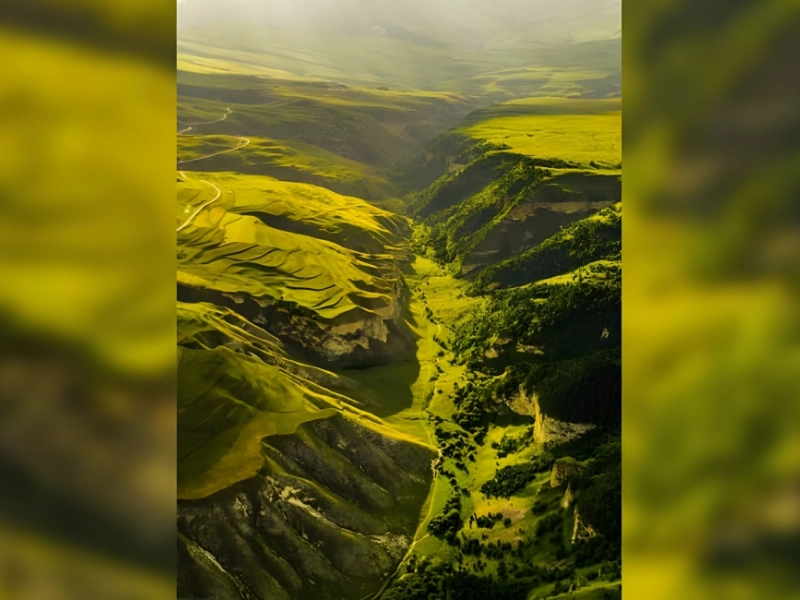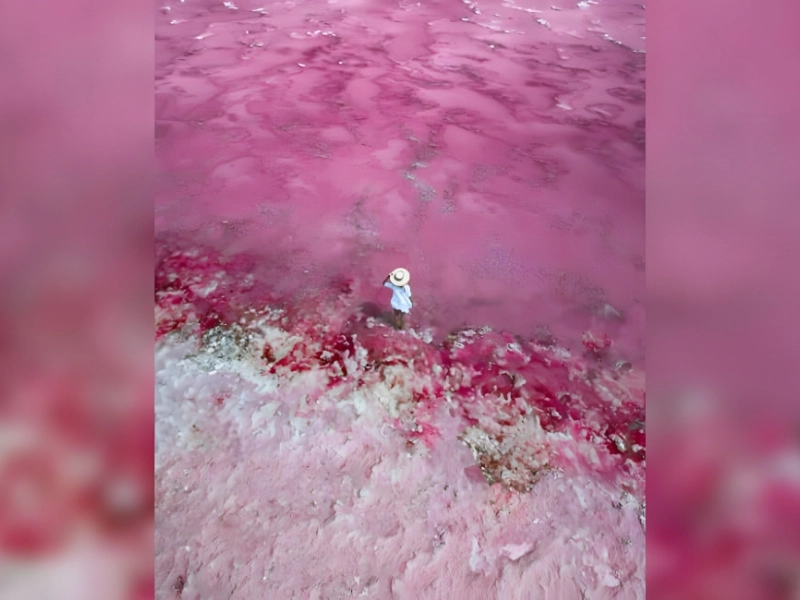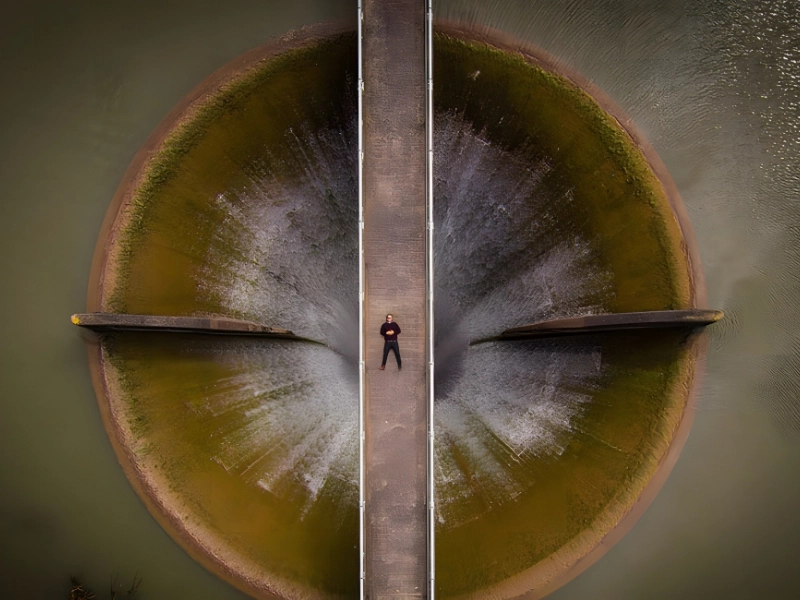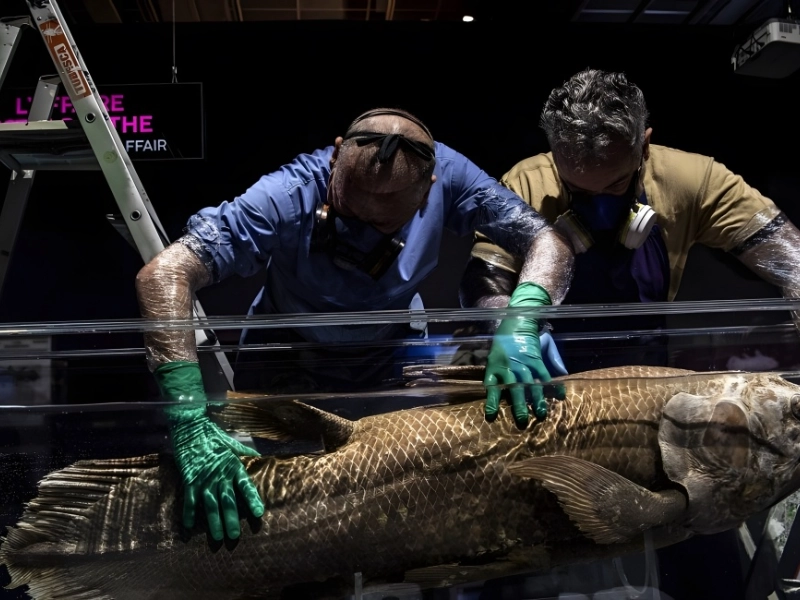4. Fields of Gold
Possible drone: Mavic 2 Pro from DJI
Where to Purchase: DJI UAVs
Expense: $1,599–$2,049 *
This image was entered into the SkyPixel 6th Anniversary Aerial Photo and Video Contest by social media user @Mikhoshka, and it won an award. The stunning image, "Fields of Gold," depicts undulating pastures in Kezenoyam, Chechnya. The deepest lake in the Caucasus Mountains, Lake Kezenoyam, is also located in this area.

Advertisement
Gold fields, courtesy of Mikhka via SkyPixel.com Mikhoshka captured "Fields of Gold" with a DJI Mavic 2 Pro drone. The photo illustrates the Mavic 2's ability to reach heights of up to 16,404 feet (5,000 meters). For photographing expansive nature vistas, it is ideal. Perfect for cold Russian conditions, it can fly in as low as 14 degrees Fahrenheit.
5. Crispy Landscape
Possible drone: Mavic 2 Pro from DJI
Where to Purchase: DJI UAVs
Expense: $1,599–$2,049 *
Photographer Boyan Ortse uploaded "Crispy Landscape" to SkyPixel, capturing a breathtaking image of a pink lake—something we don't see very frequently. Using a DJI Mavic 2 Pro drone, Ortse took this picture of a woman standing close to Pink Lake wearing a sunhat.

@Manish Mamtani/SSkyPixel.com Crispy Landscape
Pink Lake, located in the Goldfields-Esperance region of Western Australia, is renowned for its unique and striking bubblegum-pink appearance. This natural wonder has captivated the imagination of many and has been a popular subject for photographers and tourists alike. The lake's vibrant pink hue is due to the high concentration of salt and the presence of certain algae and bacteria that thrive in such saline conditions. These microorganisms produce red pigments, which, when combined with the salt, give the lake its distinctive pink color.
However, since 2017, Pink Lake has lost its famous pink tint. This change is attributed to a significant decrease in salt concentrations over recent years. The reduction in salinity has disrupted the delicate balance of conditions required for the lake to maintain its pink coloration. Factors such as changes in water levels, climate variations, and human activities have all contributed to this shift. Despite this, there is hope that Pink Lake might regain its iconic color in the future. The lake spans approximately 245 acres, providing ample space for the environmental conditions to potentially revert to those that favor the pink hue.
The phenomenon of Pink Lake's color change serves as a reminder of the delicate interplay between natural elements and the impact of environmental changes. It highlights the importance of preserving such unique ecosystems and understanding the factors that influence their characteristics. While the lake currently lacks its famous pink tint, it remains a fascinating natural site with the potential for its vibrant color to return under the right conditions.
In the meantime, Pink Lake continues to attract visitors who are intrigued by its history and the possibility of witnessing its transformation back to pink. The lake's story is a testament to the dynamic nature of our planet's ecosystems and the ongoing changes they undergo. Whether pink or not, Pink Lake remains a symbol of the natural beauty and complexity of the world's landscapes.











